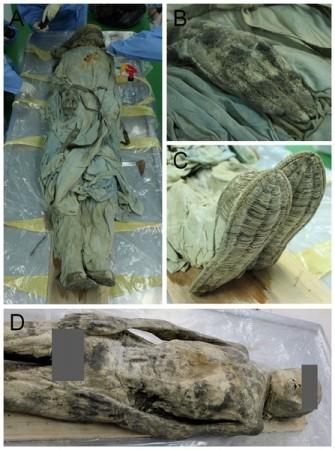
An autopsy of a 17th century Korean mummy suggest that the person suffered from a potentially painful hernia during his lifetime. And the diagnosis has come 300 years later.
The mummy discovered last year had been buried in a royal tomb of Korea's Chosun (or Joseon) Dynasty in Andong, which is now a city in South Korea, according to Live Science.
The remains belonged to a 45-year-old man, who measured 5 feet, 3 inches in length. The middle-aged man may have suffered from chest and abdominal pain and perhaps even breathlessness and nausea, says the researchers.
Though, the condition was unknown during those days, doctors now have been able to diagnose him with Bochdalek-type congenital diaphragmatic hernia (CDH).
The mummy was diagnosed using modern-day radiological imaging technologies, such as X-ray and computed tomography scans and found that the condition was from a birth defect that caused a hole in the man's diaphragm. The hole later led to herniation of several of his organs, including the right lobe of his liver, part of his colon and part of his stomach, the scientists added.
The research, led by Yi-Suk Kim, even examined the mummy for other such complications that may have been the cause for the man's death. However, the scientists found no evidence of hole or strangulation of herniated organs, which can lead to death.
"This means that the CDH itself might not have been the main cause of death in his case. He could have lived with CDH in this lifetime, while experiencing a few signs of respiratory disturbances. We suspected that the functional defects caused by the CDH in the present male mummy case might have been largely compensated for as he grew older," the authors wrote.
The researchers compared the condition to a modern Chinese woman, 50, who suffered from a extreme Bochdalek hernia, but yet showed few clinical signs of the same.
The patient's report showed that her abdominal organs had occupied the left side of her chest cavity, crushing her left lung and pushing her heart against her right lung. However, the patient complained of slight shortness of breath, according to the Journal of Cardiothoracic Surgery.
The details of the research have been published in the journal PLOS one.















